The best hearing aids are the ones you are comfortable wearing. Use a Hearing Aid Finder to see the difference between hearing aid styles.
One size doesn’t fit all
Hearing aids help put people back in touch with their family and friends by letting them enjoy social activities again. However, the truth about hearing aids is they must be custom-programmed for each user to meet his or her needs. Choosing the right hearing aid involves working with a trustworthy provider to find a product that fits your type of hearing loss, your lifestyle and your budget. Providers also take into account a patient’s dexterity, vision and even ear canal size. Just like a Medical Doctor, the right provider can make the difference between a successful fitting and a terrible experience. Consider the following information when reviewing your hearing solutions.
Digital hearing aids take into account the sound around you. The device samples the sound in your environment at 1 million times per second. Then it compares the environment to your level of hearing loss, which is programmed into the hearing aid. After 40 million calculations, it adjusts accordingly. This all happens instantaneously and is completely automatic; the user does not have to control the volume or make any other adjustments. In this day and age, there is no reason anyone should be selling you a non-digital hearing aid.
Popular hearing aid features
- Feedback Cancellation (Whistling)
- Multi-Memory Settings
- Telecoil (phone connectivity, etc.)
- Directional Microphone
- Wireless Technology
- Data Logging
- Bands and Channels
Innovations in hearing aids in the last few years have aimed to eliminate one of the biggest complaints hearing aid wearers have about their instruments, the annoying whistling called feedback. It can be caused by a number of things, such as hugging a loved one, having the hearing aid brushed by hair or simply being outside on a windy day. Newer technology has virtually eliminated buzzing and whistling caused by feedback in hearing aids without compromising performance.
While a traditional hearing aid simply amplified all sounds, technology now allows a hearing aid to perform differently in many specific environments. For instance, one memory will remember the settings you prefer in social settings, while another will be reserved for driving in the car or being outside. By having multiple memories, hearing aids offer a more optimal performance for an active lifestyle.
This feature improves a users ability to talk on the telephone. Telecoil settings amplify sound from your phone without picking up background noise and helping to prevent feedback. Besides the phone, T-coil settings can be used at venues that have a hearing loop installed. A hearing loop can be connected to a public address system or television in settings like churches, auditoriums or even your own living room. When the telecoil is turned out the sound others hear from a loudspeaker is streamed directly into the hearing aid.
The microphone component of a hearing aid amplifies incoming sounds for greater audibility. New technology gives the microphone the power to focus on targeted sounds. A directional microphone will help a wearer hear speech in a noisy environment because it will target the speech and reduce the background noise.
Allows the user to connect directly – and wirelessly – to most media devices. TV, radio, cell phone and computers can be heard in stereo-quality sound directly through the hearing aid.
Allows an audiologist to see what a history of the user’s hearing environments have been for better programming as time goes on.
These features refer to the ability to adjust hearing aid settings to best-fit individual hearing loss needs. The more bands and channels a hearing aid has, the better it can be programmed to perform for the wearer in different environments. However, be careful here because at some point excessive bands and channels become just a marketing ploy and don’t actually mean much when it comes down to adjusting the hearing aid for better sound quality.
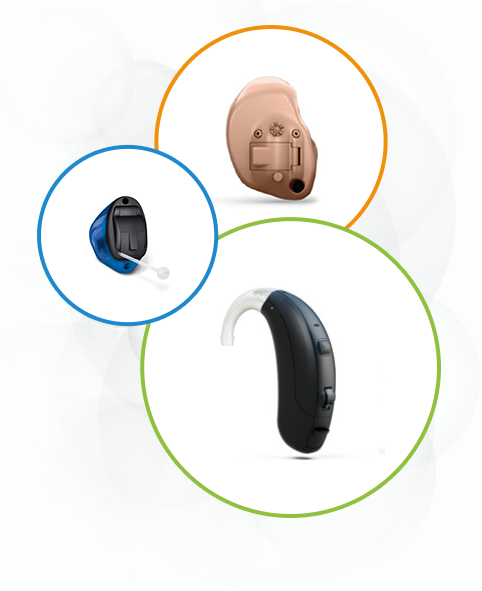
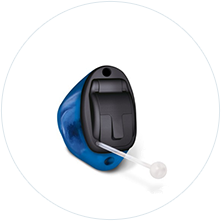
Invisible in the Canal (IIC)
IIC hearing aids are the smallest hearing aids available.They are worn deep within the ear canal, ensuring only you know that you're wearing them.The close placement to your eardrum ensures immediate sound travel and less ambient noise in loud environments. Invisible-In-Canal aids produce the highest quality sound and are the least noticeable to others. They are designed for daily removal, meaning wearers need to be comfortable inserting and removing the tiny device deep into their ear canal.
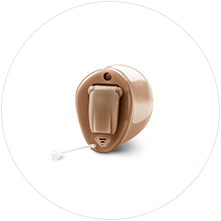
Completely in the Canal (CIC)
CIC hearing aids are one of the smallest and most popular hearing aids available. They are custom molded to fit inside your ear canal making them mostly invisible to the outside observer. The CIC allows you to choose between automatic or push button settings, which are programmed directly into the hearing aid. CIC’s placement in the ear cuts down on background noise caused by wind and other uncontrollable sounds..
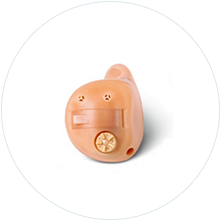
In the Canal (ITC)
ITC instruments offer the comfort of a custom made hearing aid at a slightly larger size, making them easy to maneuver and ensuring quick and easy insertion and removal.
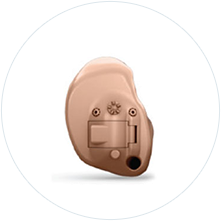
In the Ear (ITE)
The ITE is the largest custom-made hearing device as well as the easiest to insert and operate. An ITE device fits into the bowl shaped area of your outer ear instead of inside the ear canal. Their larger size allows for easy insertion and removal as well as easy access to the battery compartment and volume control..
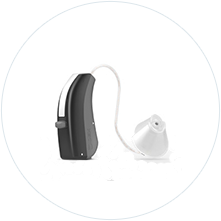
Receivers In Canal (RIC)
Receivers-In-Canal hearing aids are comfortably and effectively designed for high frequency hearing loss. This aid has two parts, the sound processor and the receiver. The sound processor is housed in a small unnoticeable case that sits behind the ear, in the same place your eyeglasses rest. A clear narrow tube follows the ear and leads to a small ear bud that houses the receiver that fits directly into your ear canal. This design helps with occlusion specifically with high frequency hearing loss.
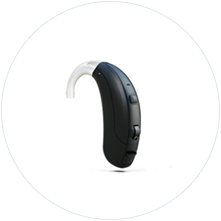
Behind the ear (BTE)
Behind-The-Ear instruments have separate receivers and sound processors similar to the RIC model. To help make the Behind-The-Ear (BTE) aid less noticeable, the custom-made ear mold and the tube that connects it to the electronic component can come in a clear plastic that complements your complexion. A specialist will manipulate the tubing to perfectly replicate the size and shape of your ear so you'll barely know its there




